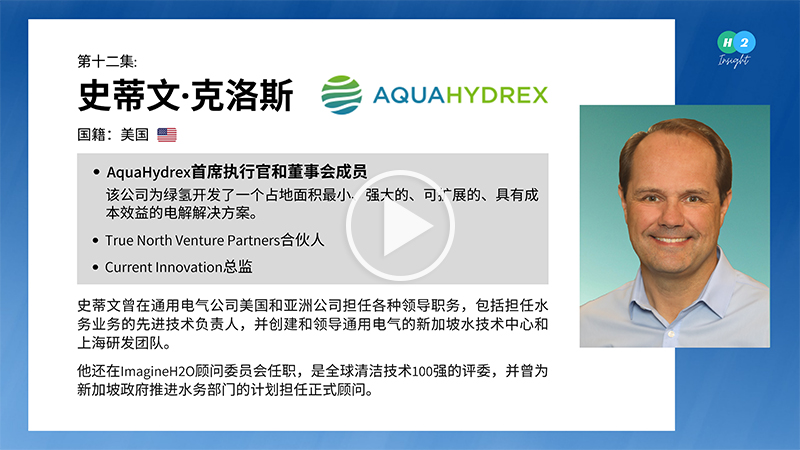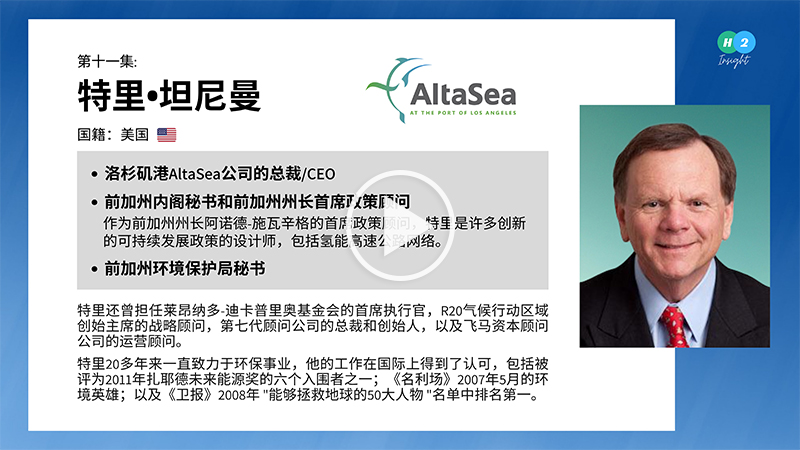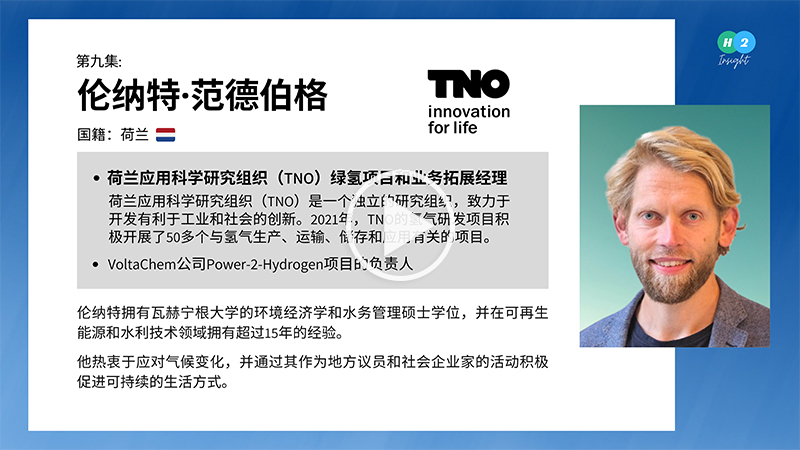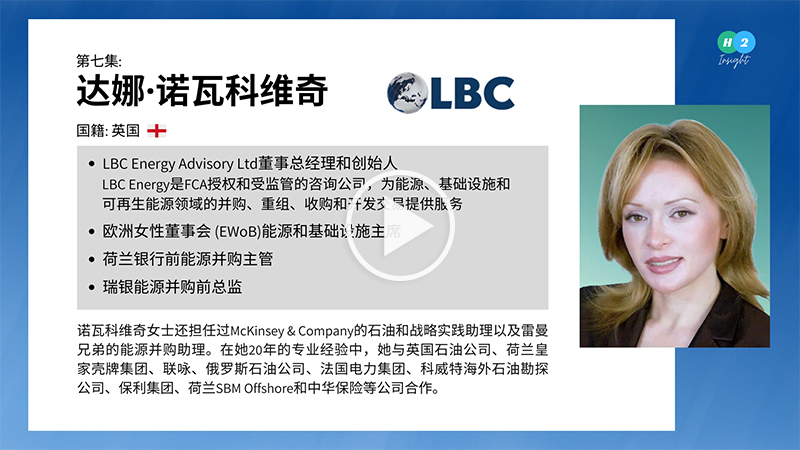H2洞察访谈 第四集:马西米利亚诺·切尔沃
本集氢能洞察邀请到了来自阿根廷的马西米利亚诺·切尔沃先生,他是世界能源理事会 (WEC) 专家小组成员和南美洲区域研究员、H2helium业务发展总监以及阿根廷国立理工大学氢能课程教授。
马西米利亚诺是一名经过认证的金融建模和估值分析师,在他看来,绿氢的成本越来越接近化石燃料的价格。氢的平准化成本有三个驱动因素。电力成本,绿氢可行的基准是大约20美元/兆瓦/小时;另一个因素是采用混合可再生能源制氢;资本支出是降低绿氢价格的第三个主要驱动因素。
各国政府目前正在着手建立氢能的势头,切尔沃认为澳大利亚、加拿大和美国是主要的出口国,因为其极具吸引力的平准化电力成本以及生产蓝氢和绿氢的丰富经验。主要消费者将是日本、中国和韩国等亚太国家,尤其是工业氢,由于在过去的十年已经实现了的电动汽车部署,欧洲将成为最大的消费者。
切尔沃指出,氨将成为氢气的主要消费者,其需求略大于炼油厂的氢气使用量。氨也将成为一种非常有吸引力的氢气载体,它的消费和需求将随着人口增长而增加。另一方面,炼油厂可能会继续使用蓝氢而非绿氢,因为对于石油和天然气行业而言,碳捕获比投资电解槽、提供电力和发展价值链更容易。
切尔沃预测,重工业和电子产品将成为新兴市场,在未来10-15年内将增加其份额。采矿和冶金行业可以使用天然气制氢,也可以作为热源。
切尔沃表示,电子产品是另一个新兴领域,绿氢的应用包括建立短期现场绿色生产设施生产绿色药品和无碳食品等产品,这些产品未来具有巨大的消费潜力和需求。
他认为,通过船舶运输纯氢具有挑战,但对于氨而言,情况并非如此,如今已有技术可以解决。氨在中短期内将成为氢的主要能源载体。陆地运输,管道是可行的,但对于长达1400公里的更远距离运输,压缩氢气(在容器或钢瓶中运输)可能是更具吸引力的解决方案。
氢能融资走的是太阳能最初的路线,项目融资尽可能依靠增加债务和确保现金流。在此基础上,获得成功项目融资的关键因素是否具有20-30年运营期的长期合同。
当前氢能项目能否融资成功,与技术无关,而与承购和纯粹的规模和需求有关,如今氢能的生产不是问题。
其他访谈视频
-
H2洞察访谈 第十二集:史蒂文·克洛斯
在第十二集中,我们与位于科罗拉多州的电解槽制造商AquaHydrex的首席执行官史蒂文·克洛斯进行了访谈,听取了该行业情况和他的公司的未来计划。
넶78 ¥ 0.00 -
-
-
H2洞察访谈 第九集:伦纳特•范德伯格
在第九集期节目中,我们采访了荷兰应用科学研究组织(TNO)的绿氢项目和业务拓展经理伦纳特•范德伯格,听取了关于电解和相关技术、其挑战以及该行业未来发展的情况。
넶52 ¥ 0.00 -
-
H2洞察访谈 第七集:达娜·诺瓦科维奇
在第七集中,我们邀请了英国LBC Energy Advisory的董事总经理兼创始人达娜·诺瓦科维奇女士来了解氢能融资、可融资性和围绕氢能投资的挑战。
넶136 ¥ 0.00








